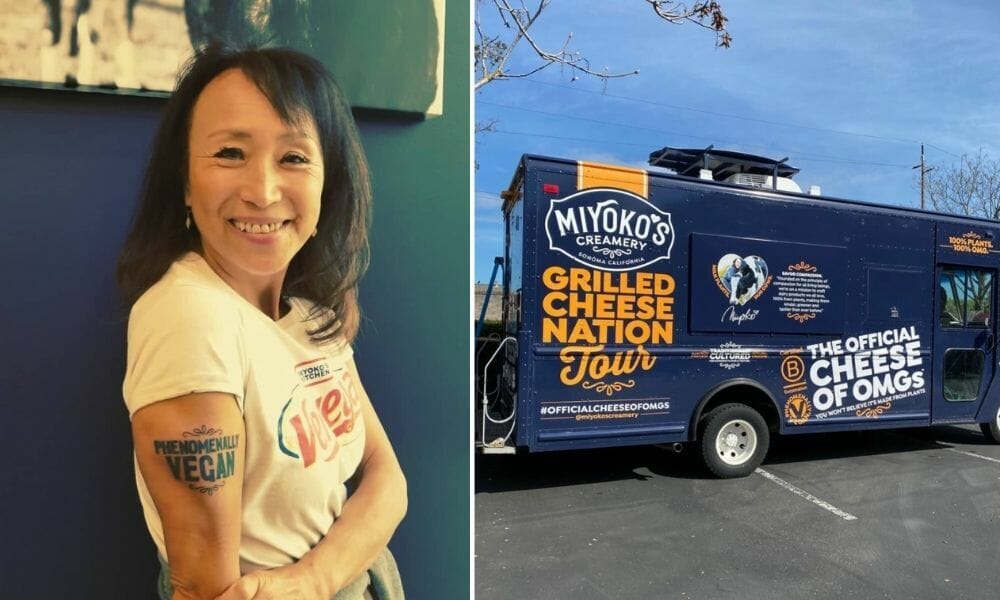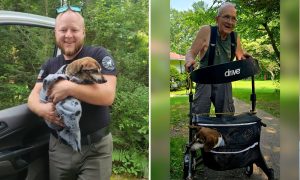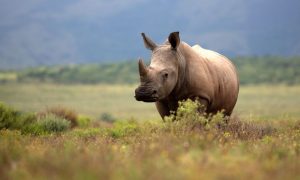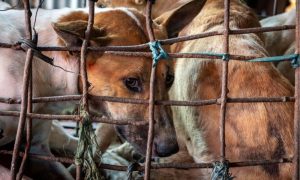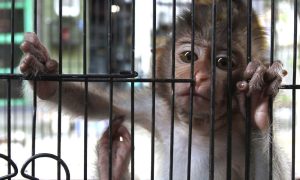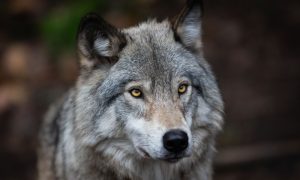When the “Vegan Cheese Queen” Miyoko Schinner immigrated with her family from Japan to the United States at age 7, she was catapulted into unexpected and unpleasant circumstances — from racism to a meat-heavy food system — that would make compassion the cornerstone of her being and her life’s work.
Among those was her first taste of pizza which — compared to the light Japanese food she was used to — earned an impression of “gross, oily, and rancid.”
Schinner also remembered hearing comments like “You people bombed Pearl Harbor” from adults while walking through her new neighborhood, or “You have hair like horse hair” from children while walking through her new school.
“I remember I got this blond wig for Halloween, and I’d go into the bathroom and put the wig on,” Schinner told Lady Freethinker. “I was so ashamed of being Japanese, of being Asian. I carried that within me for a long time.”
While the teenaged Schinner was struggling with her Japanese American identity, she also was questioning her relationship to animals — specifically, why she was eating them.
At age 12, she decided to go vegetarian overnight — a decision that shocked and horrified her parents and, after she moved back to Japan for a time, her relatives.
Years later, after learning about the environmental impacts of dairy production, she made the jump to become “phenomenally vegan” — a phrase she had boldly tattooed across her bicep after her 60th birthday.
“I look back on my life, and Japanese girls are typically raised to be very demure and obedient,” she said. “I was not. There was this defiant, independent streak in me.”
Schinner’s dedication to a vegan lifestyle led to a journey for herself and a revolution for thousands of others. Miyoko’s Creamery, her multi-million dollar business that caters gourmet vegan cheese products, has gained thousands of loyal customers and followers while also siccing her against lawsuits from Animal Agriculture advocates.
Her commitment to compassion also led her to establish Rancho Compasion, a 17-acre farmed animal sanctuary in Petaluma, Calif.
“We need to move all of humanity to recognize animals as sentient beings that have their own lives, and their own right to having their own lives,” she said. “We have to change people’s perceptions, because that’s how we evolve as a species ourselves.”
Schinner talked with Lady Freethinker about growing up as a Japanese American, going vegan, battling Big Agriculture’s attacks on her business, and her animal sanctuary, Rancho Compasion.
A Q&A With Miyoko Schinner, Founder of Miyoko’s Creamery and Rancho Compasion
Did you face any stereotypes or discrimination because of your Japanese American heritage?
When I immigrated to the United States in 1964, the parents of the kids I went to school with, most of them, their fathers had been in World War II. So I would walk down the street and people would say things like, “You bombed Pearl Harbor.” I remember having to go home and say, “What’s Pearl Harbor?” because you know, I was seven years old.
I didn’t speak English when I came to the United States, either. All the Asians were lumped into one category, so it was Ching Chong Chinaman and just every other stereotypical thing you could think of. My mother didn’t know how to make sandwiches initially, so I would be sent to school with Japanese food, and people would make fun of my lunchbox that had rice balls in it.
Being called every name, not having friends, things like people touching my hair, this one girl saying, “It feels like horse hair”… maybe I grew tough because of that.
In high school, a friend of mine back in the 70s said, “How do you feel being a third world person?” I was shocked. I didn’t even know what to make of that.
After college, I went back to Japan. I felt like I really needed to get back to my roots and really understand, “Who am I?” It was only when I came back from living in Japan for nine years or so that I became fully proud of being a Japanese American and really owning my Japanese heritage.
I figured, I can either be a victim or I can do something to alleviate the suffering of others. That’s how I have always operated. I’m not sure we can be effective emancipators of ourselves or others if we’re so caught up being a victim. We have to rise above our own victimization and figure out how we are going to lift everybody up.
This recent spate of anti-Asian violence and hate is shameful. Any kind of ism — racism, sexism, speciesism — it’s all really a scourge to humanity. You can’t create a culture based on hate. It won’t survive. It only tears you apart; it only tears the fabric of society and culture and humanity apart. We need to evolve. We need to create a culture that’s based on compassion and love. Those are the only things that matter.
Tell us about your decision to go vegan.
In Japan we didn’t eat a lot of meat; it was post World War II, and Japan was not a wealthy country yet. I came from Japan when I was almost seven years old. My father was American. He wanted to make sure that I got the nutrients I needed, and all of a sudden, I started eating tons and tons of meat. [My parents] felt that was the way to show love to me.
I became a vegetarian when I was 12 years old. It happened overnight. I went on a school camping trip and was put in a vegetarian group. Three days later, I came home. My mother put pork chops in front of me, and I saw pig. I made that connection. I pushed the pork chops away, and I never looked back, never ate meat after that. My perception changed just like that.
When I stopped eating meat, my mother was horrified. She cooked for me for a couple of months, and then she threw up her arms and said, “You are on your own.” This was a ploy to get me to start eating meat again; she figured I wouldn’t ever cook for myself. I just learned to cook, and that was it.
Being vegan was a long journey for me. When I first moved to Japan as a vegetarian, it was very hard to find anything to eat. Everything had fish broth in it. I was living with my aunt and uncle and my uncle got really pissed at me. He said, “You’re so selfish. Your aunt is cooking all these separate meals. She’s going all over Tokyo trying to find dairy products for you to eat for your protein (because I felt like I had to have dairy products), you just need to eat fish.” I got a lot of pressure, and eventually I succumbed to that, and I started eating fish.
One day I read an article (from VegNews), and I asked myself, “Why am I eating fish?” I was like, “Who have I become? Why am I doing this?” I decided I was going to go vegan. It was kind of an overnight decision, but it was a slower transition.
I used to say I was a “cheating vegan” because occasionally I would go to someone’s house and I would eat cheese, but it was just a few times a year. And eventually I said, “Why am I doing this?” and I just got rid of dairy all together.
The more I learned about the sustainability aspect and the treatment of cows, it was more encouraging for me to continue this journey.
Tell us about your “Phenomenally Vegan” tattoo.
‘Phenomenally Vegan’ was a phrase that our VP of Brand Jim Allsopp came up with, and I felt like it signified everything that I wanted. We were getting pushback from the industry and from various people saying, “Why are we using the word ‘vegan’? We should be saying ‘plant-based,’ it’s friendlier, it doesn’t scare people away.”
This was a discussion all over the industry. I thought this was bull shit. First of all, we don’t even know what the word ‘plant-based’ means; studies have shown there is more confusion about that term than the word ‘vegan.’ And who cares if it has baggage? Language evolves.
What’s the intention behind the word ‘vegan?’ Let’s reset that intention. Let’s repackage it and make it look beautiful. By saying ‘phenomenally vegan,’ it could not only become aspirational but inspirational.
What I want to do with vegan is just make it such an exciting thing that everybody wants to be vegan. I’ve given talks about how veganism is like the world’s biggest, most inclusive club. Membership is free, everybody can join, and OH MY GOD IT IS SO MUCH FUN BEING VEGAN, you can’t believe it.
People come up to me and say, “You’re vegan?” And I say, “Oh my God, you’re not vegan?! You don’t know what you are missing!” It’s FOMO (Fear Of Missing Out); that’s what we have to communicate to people, how great the vegan lifestyle is.
Vegans are happier. That’s what I want to show the world: this is your opportunity to elevate your own life to become a happier human being. I want to prove to the world how phenomenal it is to be vegan.
I did [the tattoo] right after my 60th birthday, my first tattoo, to show how phenomenally vegan and how proud I am. And I still have the arms to show for it, haha.
Tell us more about how your rise to becoming the “Queen of Vegan Cheese” has caused battles with Big Animal Agriculture.
What is it they say? First they ignore you, then they laugh at you, then they fight you, then you win. That’s where we are. Thirty years ago, when I had my first business in the United States, I was making vegan cakes; I had a little bakery, and I couldn’t get anyone. I was ignorable. Veganism was laughable. People were like, “Vegan cheese, haha.” But now we’re at a point where we are big enough, we are making enough of an impression, we are now becoming a threat.
Part of the problem is the dairy industry is creating their own problems. Consolidation of the dairy industry has led to the decline of small stake farmers. Since the 1970s, dairy consumption has been on a precipitous decline all around. Dairy is not lucrative. The small farmer doesn’t set the milk prices. They are getting conventional prices for organic milk; it doesn’t make sense anymore, they can’t make their overhead.
So it isn’t the plant-based companies that’s threatening them; it’s this corporate, Big Ag consolidation that’s impacting them. It’s a whacky system, and the whole thing needs to be reset.
You’re passionate about the plight of the Tule Elk in Point Reyes National Seashore — tell us more.
What’s poignant about this particular issue is that Tule Elk are a native species in California. There are only 5,000 left. They were actually hunted to near extinction in the 1800s, then they were brought back to life.
Of the 5,000 or so, the largest herd can be found in Point Reyes National Seashore. Unfortunately, there were about 450 [elk] in a certain part that had a smaller area to graze because [the National Park Service] had built fencing to protect the cows on ranch land.
Point Reyes National Seashore was actually created as a get-away or a way to connect lower-income communities in the Bay Area to nature. This initial lease [to ranchers], they were supposed to leave; they were supposed to transition off the land, and then the entire area was supposed to be wilded and revert to natural habitat. That didn’t happen.
The lease was up. The park service had five or six proposals. Unfortunately the one that allows the ranches to remain and to diversify with even more animals and crops won, despite public support for ranching to end.
Here’s what happened with the Tule elk: in the last six months, over a third of the herd has passed away because they had no access to water or forage. In addition, the Proposal B that won will allow for culling of herds so we can keep the number of Tule elk in check because the ranchers are complaining that they are taking the forage.
Now grant that an average cow needs to eat 40 pounds of hay a day and a Tule elk needs nine pounds, so it’s considerably different. There are 5,000 cows on Point Reyes National Seashore, and I believe there are something like 900 Tule Elk, so there’s no contest whatsoever.
The fact is that this is representative of what happens across the country. Everyone says they are lovers of wildlife, but what they don’t realize is that if you love wildlife, you can’t have your steak — especially your steak, but also your chicken or pork — because here is what happens. We actually have an agency called U.S. Wildlife Services, and they actually have one purpose, and that is primarily to exterminate or control wildlife that competes with or threatens animal agriculture.
Every single year, we kill approximately 100 million animals … everything from predators, like bobcats and coyotes and mountain lions to species that supposedly compete with grazing, such as mustangs, burros, deer, elk, animals you wouldn’t even think of, like birds… and we pay lots of taxpayer dollars to get rid of wildlife.
That’s so you can have your free-range beef. I ask people to think about that. The next time you say, “I love wildlife,” I ask “How much do you love wildlife? Do you love wildlife enough to give up steak?”
Tell us more about Rancho Compasion, your farmed animal sanctuary.
A number of years ago, I was giving a talk somewhere in Texas. I went to a vegan food truck, and behind the food truck there were two little piggies, rescue piggies. I thought they were so cute. I came home and I said to my husband, “One of these days when we retire, I would love to go out, buy some land, and rescue some farmed animals.”
He was on the internet. He said, “There’s a place 15 minutes away, 17 acres with a barn, why don’t we go look at it?” The next thing you knew, literally, we had moved there. We weren’t planning to rescue any animals at the time. We just thought this was a great opportunity. Then Animal Place, a sanctuary in Grass Valley, Calif., called and said “We have these two goats that we found, strays, can you take them?” So Rufus and Reggie came to live with us.
Then next thing you knew, someone called and said, “This man died, and he left three little pot-bellied pigs, can you take them?,” so they came. And then Farm Sanctuary called, and someone else called, and we said, “We are just going to start a sanctuary.”
We formed a 501(c)(3) nonprofit and we called it Rancho Compasion — Compassion Ranch. Today we have about 120 animals. We have a very small staff and a lot of volunteers. We’re the closest sanctuary to San Francisco and the East Bay. It’s a place you can come to connect with animals and learn about animals. We’ve done outreach to schools.
We have all kinds of animals, everything from chickens and turkeys to cows and every species in between. I have formed such friendships with all of them, and I have learned about how they can be just like us.
Some of them are compassionate and sensitive. Others are jokesters and goofy. Others are aloof. Others are feeling pain, and you can tell when they are sad. They have a range of emotions just like human emotions, and we just need to get wise enough to learn to listen.

